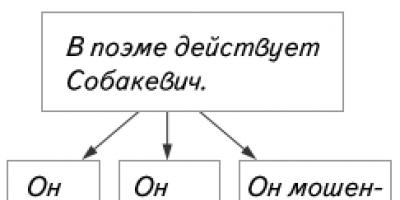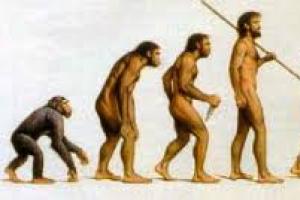Remember, at school they told us that once upon a time our planet was one continent, inhabited by incredible creatures that can no longer be found. It’s not so easy to imagine modern continents assembled into one single landmass, like giant puzzles! Even more amazing is how strong the prehistoric earthquakes and tectonic shifts were, that they even destroyed ancient Pangea and made 6 separate continents out of it at once.
Scientists have done a lot of research on Pangea, but they still have many questions. Moreover, if the theory of continental drift had not existed, the concept of a supercontinent might never have appeared at all. Here is a list of 10 amazing facts about Pangea that not everyone knows about.
10. Why did Pangea appear in the first place and why did it break up?
Scientists still face two important questions about the supercontinent Pangea. How and why was our continent formed, and why was it divided into several parts? The answers to these questions turned out to be not so obvious. Scientists still cannot accept one general version of the development of events, since there are several worthy theories.
Most researchers believe that it's all in the earth's mantle. Probably, the tectonic plates shifted due to the heating of the mantle from radioactive decay, which caused the formation of Pangea, and then its split into separate continents.
Such processes do not occur all the time, which is why supercontinents took so long to form and break up. It's incredible how much power the Earth's mantle holds within itself, and how much it has influenced the appearance of our planet as we know it today.
9. Great Rift Valley
Not far from Kenya there is a whole chain of deep crevices that seem to tear the land apart. This area is called the Great Rift Valley or the East African Rift, and it looks both terrifying and fascinating. The earth here is literally divided in half, which even resembles some sights from action films.
Once upon a time there were roads and houses in the area of this unique valley, but they were long ago swallowed up by the East African Rift. Perhaps such tectonic activity indicates the resumption of the process of formation of a supercontinent similar to Pangea. Would you be interested in witnessing something like this?
So how is this valley connected to Pangea? Naturally, a supercontinent, like Pangea once was, will not appear on our planet anytime soon. However, the appearance of new gorges confirms the theory of the existence of Pangea and the theory of continental drift, and also helps shed light on what supercontinents will look like millions of years from now.
8. Fossil evidence
 Prehistoric fossils also help scientists understand what life was like on Pangea millions of years ago. Nowadays, we all know that in North America, elephants can only be found in a zoo, and polar bears do not live in Africa. Some animals simply do not belong in countries with unsuitable climate and terrain. However, archaeologists have encountered fossils that have been preserved since the time of the proto-continent Pangea, and these finds confirm that once upon a time, almost the same creatures could be found all over the Earth, although today the flora and fauna on different continents has obvious differences. It turns out that discovering some fossil remains was possible only for one simple reason - all the continents were once connected by a single landmass, and they were not separated by the waters of the World Ocean.
Prehistoric fossils also help scientists understand what life was like on Pangea millions of years ago. Nowadays, we all know that in North America, elephants can only be found in a zoo, and polar bears do not live in Africa. Some animals simply do not belong in countries with unsuitable climate and terrain. However, archaeologists have encountered fossils that have been preserved since the time of the proto-continent Pangea, and these finds confirm that once upon a time, almost the same creatures could be found all over the Earth, although today the flora and fauna on different continents has obvious differences. It turns out that discovering some fossil remains was possible only for one simple reason - all the continents were once connected by a single landmass, and they were not separated by the waters of the World Ocean.
Cynognathus was an ancient reptile, and it lived on our planet during the Triassic period, that is, when Pangea existed. Scientists have discovered the remains of this animal in both South America and Africa. Lystrosaurus were other land reptiles, and their remains have been found in India, Antarctica and Africa. If these lands were not part of a single Pangea, the discovery of prehistoric remains of lystrosaurs in such distant places would simply be impossible. Archaeological evidence clearly points to the validity of the theory of the existence and division of Pangea.
7. Panthalassa
 We all know that there are 5 oceans on Earth: Arctic, Atlantic, Pacific, Indian and Southern. All these oceans are simply huge and occupy most of our planet. At the time of Pangea, almost all the same amount of water was in one single ocean, which modern scientists called Panthalassa.
We all know that there are 5 oceans on Earth: Arctic, Atlantic, Pacific, Indian and Southern. All these oceans are simply huge and occupy most of our planet. At the time of Pangea, almost all the same amount of water was in one single ocean, which modern scientists called Panthalassa.
Since the earth's land was once a single continent of Pangea, only one ocean surrounded its shores. This means that the currents in that prehistoric ocean were completely different - not the same as today.
According to experts, the Panthalassa currents should have moved at greater depths. In addition, scientists suggest that during the time of Pangea there were no such significant ebbs and flows. This giant single ocean should have been very calm, and the water temperature in it should not have varied as much as in the modern world.
6. Functioning of new oceans
 When Pangea began to split into different continents, the movement of water in the ocean changed. The split of the procontinent into different continents not only divided the ancient ocean of Panthalassa, but it also caused the emergence of completely new ocean currents.
When Pangea began to split into different continents, the movement of water in the ocean changed. The split of the procontinent into different continents not only divided the ancient ocean of Panthalassa, but it also caused the emergence of completely new ocean currents.
These currents began to move in a circle from west to east, which had never happened before under Panthalassa. In addition, the distribution and distribution of cold and warm water has also changed. As the oceans became more fragmented, it became harder for currents to move and mix warm water with cold water, and this significantly affected water temperatures in different parts of the world.
5. Climate
 Researchers believe that the central parts of the modern continents were very dry, and that during the existence of Pangea there was almost no rain there. All this resembles a desert climate, and this phenomenon was due to the fact that these territories were surrounded by high mountains, which restrained the influx of rain clouds into certain regions. Thanks to the discovery of coal deposits in certain places, scientists came to the conclusion that the part of Pangea's landmass closest to the equator was covered with tropical rain forests. It is difficult to imagine how different the climate was on the prehistoric supercontinent. What seems even more incredible is how, with the help of such a seemingly insignificant find, experts are able to understand what life was like on our planet in the most ancient times.
Researchers believe that the central parts of the modern continents were very dry, and that during the existence of Pangea there was almost no rain there. All this resembles a desert climate, and this phenomenon was due to the fact that these territories were surrounded by high mountains, which restrained the influx of rain clouds into certain regions. Thanks to the discovery of coal deposits in certain places, scientists came to the conclusion that the part of Pangea's landmass closest to the equator was covered with tropical rain forests. It is difficult to imagine how different the climate was on the prehistoric supercontinent. What seems even more incredible is how, with the help of such a seemingly insignificant find, experts are able to understand what life was like on our planet in the most ancient times.
4. Mass extinction
 Even now, a huge number of animals are on the verge of extinction. However, we have not yet witnessed the disappearance of most species in one short period of time. Mass extinctions are rare, but they have happened in the past and will continue to occur in the future.
Even now, a huge number of animals are on the verge of extinction. However, we have not yet witnessed the disappearance of most species in one short period of time. Mass extinctions are rare, but they have happened in the past and will continue to occur in the future.
During Pangea, the mass extinction occurred approximately 252 million years ago. This period was called the “Permian Mass Extinction,” and after it, among the survivors were creatures that became relatives of modern birds. The first species of dinosaurs also appeared around the same years.
3. Cycles of supercontinents
 You probably already realized that today our planet looks completely different than it did during the time of Pangea. However, researchers are confident that the current appearance of the Earth will not last forever, and that in the future a huge supercontinent like Pangea will appear on it again.
You probably already realized that today our planet looks completely different than it did during the time of Pangea. However, researchers are confident that the current appearance of the Earth will not last forever, and that in the future a huge supercontinent like Pangea will appear on it again.
Throughout the history of the Earth, continents have converged and diverged, sometimes forming supercontinents, but again splitting them into pieces, so this will probably happen again in the future. Already, Australia is gradually approaching Asia, which actually indicates the possibility of a future supercontinent appearing here.
How long will it take for such a massive landmass to form, and will we be able to see it with our own eyes? Such a process can take from 300 to 400 million years, and then about the same amount of time is needed to divide the new supercontinent into several smaller landmasses. In general, not only we, but also our grandchildren and great-grandchildren, of course, will not be able to witness something like this.
2. Fauna
 Pangea could remind us of a picture of an extraterrestrial world from a movie if we could travel to the Permian period in the blink of an eye. In those years, life on our Earth was completely different from the modern one to which we are so accustomed. There were a lot of different animals that lived on Pangea, and most of them were very different from the modern fauna. For example, the Traversodontidae were a family of herbivores believed to be the ancestors of modern mammals, and were particularly abundant during Pangea. By the way, even then all kinds of beetles and dragonflies were scurrying around everywhere.
Pangea could remind us of a picture of an extraterrestrial world from a movie if we could travel to the Permian period in the blink of an eye. In those years, life on our Earth was completely different from the modern one to which we are so accustomed. There were a lot of different animals that lived on Pangea, and most of them were very different from the modern fauna. For example, the Traversodontidae were a family of herbivores believed to be the ancestors of modern mammals, and were particularly abundant during Pangea. By the way, even then all kinds of beetles and dragonflies were scurrying around everywhere.
During the Triassic period, the first archosaurs appeared on Earth, which eventually became the ancestors of modern crocodiles and birds. At the end of the Triassic period, as we mentioned earlier, dinosaurs also inhabited our planet. However, those new dinosaurs didn't look exactly like the ones in Jurassic Park.
Researchers believe that these dinosaurs had very porous bones, and that they were covered with feathers rather than scales like common reptiles. Most of the species that lived on Earth during the existence of the supercontinent Pangea became the ancestors of modern fauna.
1. The name "Pangea"
 Pangea is not only a very strange, but also a very symbolic name for the proto-continent. In 1912, a meteorologist named Alfred Wegener became the first scientist to propose the idea of supercontinents. He worked on the theory of continental drift, and this research led him to believe that once upon a time there must have been either a few larger continents or one huge supercontinent on Earth. But why did he decide to call the very first of them Pangea?
Pangea is not only a very strange, but also a very symbolic name for the proto-continent. In 1912, a meteorologist named Alfred Wegener became the first scientist to propose the idea of supercontinents. He worked on the theory of continental drift, and this research led him to believe that once upon a time there must have been either a few larger continents or one huge supercontinent on Earth. But why did he decide to call the very first of them Pangea?
The word "pangea" comes from the Greek word "pangaia", meaning "the whole Earth". This name is simply ideal for the supercontinent discussed in our selection, because once upon a time Pangea was just one landmass, and all the lands were then collected in one place. Of course, Wegener faced fierce criticism of his theory, but without his fundamental work on the theory of continental drift and the concept of Pangea, we would not have as much evidence in favor of these ideas as we already have. Wegener's assumptions today no longer raise any doubts.
.
You know, I don’t remember at all that anything big came off the Earth. Maybe it was something else? Or is there something wrong?
How there was one continent, I remember. Large, almost round. If you put it on a modern map, then it occupied the entire territory of the Atlantic (to the equator approximately or slightly to the south), Eurasia and half of the North. Such a hat turned out to be a bikren.The continent was mountainous, especially in the northern part, there were the highest peaks and one of them (or two more) was almost at the north pole, but a little to the west. Maybe there was a magnetic pole there? The mountains were high and there was snow on them. I saw it all as if from a great height, so I don’t know the details.
Then something incredible happened. I’m not asking you to take this on faith, but you can at least somehow check whether this could have happened or not. Believe it or not, the continent split apart like a flower. This is a seven-flowered flower. At least to me it reminds me a lot of a lotus flower. Long, uneven strips of land, like petals, began to spread out to the sides. Moreover, the movement was from the pole to the sides, and at the equator - where the “base of the flower” was, the movement was minimal. It's like a flower has blossomed.
I think there were seven petals. I don’t remember visually, but there is some certainty.The two Americas and Africa have changed little. The external contours have been changed a little and the location has been changed, but here’s everything else! Other continents converged so many times, diverged, moved unknown how, crumbled, collided, sank, floated.There were either many small ones, or one big one. I don't even remember the sequence of what's what. Some kind of porridge.
At first I wanted to tell you, then I thought, you’ll decide that I’m talking some kind of nonsense, and I didn’t. I recently bought a school atlas, looked at the pictures - I couldn’t find anything even remotely similar. I think I probably have some general images and nothing specific.
And then I took my favorite book with ancient jokes and fairy tales - it’s called “Panchatantra”. And somehow, completely incomprehensibly, I came across a description of the magical ritual “confirmation for the kingdom.” And why didn’t I pay attention to this episode before? I ran my eyes and that was it. " ...and they drew the circle of the Earth with seven continents..." I looked in the notes, and it says “mythical continents”... If they didn’t exist, why are they mentioned in the Panchatantra?
Chaos is chaos, but if you move three petals down, and tear off the upper tips of the remaining four and again apply them to the north, where they were, you will get a Mercator map. This map doesn't show the great northern continent at all. This is an archipelago - four large islands and one small “Navel of the Earth” in the center.
I don’t know where this archipelago went later - it’s a lapse in memory. Either the moon did not lift off or I was not there at that time.
***
Agree - it doesn’t look much like a force of nature. Rather, reasonable, well-organized actions. Global redivision of the world. There was a large cap on the birch, but it became small on the top of the head, and several more areas of land scattered over the surface. This means that the territory that you call Hyperborea was artificially created from the very beginning.
There is also a concept in Indian mythology - “Guardians of the World”. This is a group of deities, patrons of the countries of the world: north, northeast, northwest, east, west, southeast, southwest, south, zenith, nadir. And what would that mean?
***
I can neither confirm nor refute your assumption about the origin of the Moon.
Start/
My comment: I cannot leave this message without comment, especially since the Princess hinted to me to do so. If it describes events that actually existed on Earth, then such a supercontinent could only be Pangea, which broke up in the Mesozoic 150-220 million years ago. Then Pangea divided into two supercontinents - Laurasia, which almost simultaneously (135-200 million years ago) began to divide into North America and Eurasia, and Gondwana, which later broke up into South America, Africa, Antarctica, Australia and Hindustan. That is, there were really seven continents, and this is exactly the number of them described in sacred geography (Bhagavata Purana, Vishnu Purana, etc.).
As you know, there are now six continents. This is a fairly good reason to talk about the correctness (regardless of what the Swan said) of my dating of the events described in the Indian epic - they occurred before the collision of Hindustan with Eurasia, which began at the end of the Eocene, about 40 million years ago, and continued the entire Oligocene and a significant part of the Neogene.
Read my works"
Civilization arose 600 million years ago.
Civilization stopped resisting the aggressively changed environment 180 million years ago - the end.
Pangea is the All-Earth. A gigantic Protocontinent, which included Gondwana.
Pangea is the name given by Alfred Wegener to the protocontinent that arose during the Paleozoic era.
The German geologist Suess christened this continent with the name Gondwana, but nowadays it is more often used - Pangea.
Gondwana arose approximately 530-750 million years ago. It was located around the South Pole for a long time.
In the early Paleozoic, it gradually shifted north and merged during the Carboniferous period (360 million years ago) with the North American-Scandinavian continent into the giant protocontinent Pangea.
The name Gondwana was retained by one of the continents into which Pangea split 180 million years ago.
+++++++++++++++++++++++++++++++++++++++
ZThe land of Pan was the culmination of success in relation to experimentation and crossing of different DNA helixes. This was paradise or the “Garden of Eden” described in religious books. Between 200 and 20 million years ago, most of the Earth was covered in tropical jungle. Evidence of this can be seen by examining geological formations, especially in desert areas.
INMost places on Earth were bathed in water and dense vegetation. Even the polar regions teemed with life.
Gthe humanoid form was seeded approximately 100 million years ago, in the middle of the jungle period. These were small groups of humanoids living in relatively small areas of the Earth. The humanoids were seventh density beings, with wings and highly developed telepathic and psychic abilities. They lived in paradise.
ABOUTneither extracted food directly from sunlight, but absorbed water through their pores. They didn't need anything but each other. In religious scriptures this world is called the Garden of Eden.
INAt that time, life forms were varied and abundant. About 60 million years ago, the dinosaurs were killed when Comet Arunatak was on its 10,500-year cycle and came too close to Earth during its passage. The resulting cold snap destroyed most of the vegetation, but the Earth, with its amazing ability to heal itself, was able to bounce back and ensure another fertile period.
INAt that time there were only a few hundred thousand humanoid forms on Earth, and most of them went underground, where, with the help of various Pleiadian groups, they created an underground world of great beauty and complexity. This is where the legends about the "inner earth" originate.
ABOUTsome of them have legends, including Pegasus and Centaur. Some creatures were descendants of dinosaurs and early reptiles. Dragons entered folklore from two sources - Pangea and the Draconian invasion. Early dragons were reptilian creatures that evolved along with dinosaurs. They were genetically manipulated by different groups of aliens. Later, the Draconian civilization came to Earth in its reptilian form and began interbreeding and creating exotic dragon forms.
PThe end of Pangea happened when the “Sons of God” (Pleiadians of seventh density) incarnated into humanoid forms developing on Earth and forgot about their divine connection. Prior to the incarnation of the seventh density Pleiadians, humanoid forms possessed primitive consciousness, somewhere between second and third density. Scientists who study evolution view the change introduced by the Pleiadian incarnation as an unexplained mutation that marks the difference between primates and humans.
INthe embodied Pleiadians interbred with different creatures; This is how half horses, half people and many others appeared. The fairy kingdom was one of the side branches of this crossbreeding. Seventh density souls "dressed" a humanoid form with wings. When they crossed with four-legged creatures, one of the results was Pegasus, or the winged horse.
TOWhen humanoid Pleiadian souls lowered their vibration, their wings atrophied, along with telepathic and other abilities. More and more they became like the creatures evolving on Earth - more animal in nature and less capable of expressing higher intelligent thinking abilities.
INDuring the time of Pan or Pangea, as it is sometimes called, experiments with DNA continued, and guardians were not built into the “Earth Laboratory”. This meant that different life forms could interbreed and create other exotic mixtures and hybrids.
INAt that time, your world of Earth was inhabited by many strange creatures, and all of them were the result of genetic experiments and interspecies crossing.
GThe giant ocean that washed Pangea is called Panthalassa.
WITHhypercontinents existed earlier, for example Rodinia, which broke up 750 million years ago.
PAccording to some forecasts, in the future the continents will once again gather into a supercontinent called Pangea Ultima.
PAngea Ultima (Last Pangea) is a hypothetical supercontinent into which, according to some forecasts, all current continents will merge in 200 million years.
AThe coinage of the term “Pangaea Ultima” and the theory of its appearance belongs to the American geologist Christopher Scotese, who studied the history of lithospheric plates.
WITHThis theory overlaps with the theory of Amazia, a future continent from Eurasia and North America that will become the core of a future supercontinent.
TThe theory of the emergence of a future supercontinent is based on several scientific achievements:
1
. A study of the history of plate movement has shown that over a period of 500-600 million years, blocks of continental crust are collected into a single supercontinent.
2 . The direction of movement of modern continents has been determined by various independent methods. By extrapolating from this data, it is possible to calculate when the continents will collide with each other.
In 250 million years, the North American continent will rotate counterclockwise and Alaska will be in the subtropical zone. Eurasia will continue to rotate clockwise, and the British Isles will be near the North Pole, while Siberia will be in the subtropics. The Mediterranean Sea will close, and in its place mountains will form, comparable in height to the Himalayas. Pangea Ultima will be 90 percent desert. There will be giant mountain ranges in the northwest and southeast of the continent.
++++++++++++++++++++
According to the latest estimates by scientists, at the end of the Permian period, from 93% to 97% of all sea inhabitants and almost two-thirds of land animals and plants died on the planet. A terrible catastrophe 252 million years ago practically destroyed ancient forests. Today, the cause of the greatest mass extinction of all time is one of the biggest mysteries for paleontologists.
According to scientists from the Chinese Geological University (中国地 质 大学 ) the death of most of the planet's biomass was the result of the formation of the supercontinent - Pangea.
In their article, published in the journal Science China, Earth Sciences, the authors write that researchers from around the world now have ample evidence of strong climate changes on Earth 252 million years ago. Among the main indicators: a sharp decrease in oxygen saturation of the World Ocean and an increase in the concentration of greenhouse gases in the atmosphere - carbon dioxide and methane.
Due to intense acid rain, the chemical composition of sea water changed, which destroyed corals, and the land gradually turned into a lifeless desert as a result of climate warming. The cataclysm lasted for millennia, and the climate pendulum swung in one direction or the other: periods of warming were followed by cooling.
According to the theory of scientists from the Middle Kingdom, the source of all troubles was the large-scale movement of tectonic plates that occurred 50 million years before the start of these cataclysms. During mutual collisions, some of the plates sank into the mantle, which was accompanied by a thickening of the earth's crust and an increase in the depth of the World Ocean.
It was then, at the beginning of the Permian period, about 300 million years ago, that these geological processes caused a reversal of the Earth's magnetic field, when the planet's magnetic poles switched places. More importantly, a large amount of cold material ended up in the mantle, where a kind of “trail” was formed from them.
Over millions of years, thanks to thermal convection, part of the substance of this “plume” found its way to the surface. This first happened 251 million years ago in the territory of modern Siberia, when lava covered more than 4 million square kilometers of the Earth - a huge area corresponding to the area of seven Frances.
Another similar hole in the earth’s crust formed 260 million years ago in the south of modern China. It is these two eruptions, which occurred as a result of the massive convergence of tectonic plates, that Chinese scientists call the source of all those misfortunes in the form of greenhouse gases and acid rain that hit the planet even before dinosaurs appeared on it.
Let us add that not all experts agree with the opinion of their Chinese colleagues. The most criticized is the time gap of 50 million years between the formation of Pangea and the volcanic eruptions. Some scientists believe that the causes should be sought chronologically closer to the extinction itself.
If you want to swim, then hurry to the beach. You can still make it. Some scientists claim that in 300 million years the Atlantic Ocean will completely disappear. By that time, the east coast of the United States of America will become the new Midwest, 4,800 kilometers from the nearest ocean.
Movement of continents

Continents that seem so firmly in place are actually moving. About once every 500 million years, continents collide. During this universal collision, the coastlines rise to the sky like mountain ranges. When this happens next time, all the continents will merge into one huge continent, surrounded on all sides by the World Ocean. It will be possible to drive a car from Detroit to Paris and continue on to Beijing. True, if by that time humanity does not cease to exist, it will change the names of states, countries and cities several times.
Plate tectonic theory
This picture of continents colliding with others is based on the theory of tectonic plates. What we call the Earth's crust is actually a mosaic of plates floating on the surface of hot, partially molten rocks in the Earth's mantle. Like rafts on the surface of the sea, the continents glide over the semi-liquid rocks of the Earth’s mantle. The continents - North America, South America, Africa, Eurasia (Europe and Asia), Australia and Antarctica - are on tectonic plates.
Related materials:
How has the Earth's surface changed?
If the plates drift, then the continents move along with them. How mobile are they? Well, for example, in 1994, the plates of America and Eurasia diverged, drifting by about two centimeters. The Atlantic Ocean has become a little wider.
Scientists think that the movement of continents is a cyclical process that repeats itself over and over again. Continents converge and diverge again approximately every 500 million years. You don’t have to take the words of scientists at face value. Just look at the globe. The continents look like puzzle pieces made up of pieces that need to be assembled into one picture. When you look at the continents, it is not difficult to imagine these pictures connected together. For example, the concave part of the northeastern coast of South America corresponds very closely to the concave coastline of the western coast of Africa. Connect the puzzle pieces together and get a super continent.

The last super continent that broke apart 180 million years ago is what scientists call Pangea, which is Greek for “the whole Earth.” It seems that Pangea was surrounded on all sides by a gigantic planetary ocean, the predecessor of the modern Pacific Ocean.
Spread of the book "Origin of the Continents and Oceans" (1924) depicting the evolution of the Earth's surface.
At the beginning of the twentieth century, the hypothesis of continental drift was most comprehensively worked out by the German geophysicist and meteorologist Alfred Wegener (1880-1930). Long before him, many geographers and philosophers paid attention to the amazing similarity of the outlines of the western coast of Africa and the eastern coast of South America, but no one came to the revolutionary idea that these and other continents were once a single whole - a supercontinent, to which Wegener gave the name Pangea. Why did the hypothetical supercontinent break apart and the continents begin to drift freely on the surface of the Earth, like icebergs in the ocean? Wegener was unable to propose a convincing drift mechanism, which caused a decline in interest in his ideas.
Earth. Inside view
The simplest explanation was provided by an alternative hypothesis about the expansion of the Earth and the gradual increase in the area of its oceans. Then modern continental drift is apparent! In fact, they remain in their place, and the growing gaps between them are gradually filled (healed) by the newly formed oceanic crust, hidden under many kilometers of water. If we exclude modern oceans and leave only continents on the surface of the Earth, its radius would have to be halved!
This assumption was too bold for its time, and the vast majority of geologists between the two world wars rejected it, preferring the view that the volume of the Earth did not undergo significant changes in its geological history.
The hypothesis of continental drift again attracted attention after the Second World War, in a new round of scientific research. Firstly, detailed maps of the depths of the World Ocean were compiled and chains of mid-ocean ridges tens of thousands of kilometers long were discovered. Secondly, stripe magnetic anomalies were found in all oceans, symmetrical to the median ridges, which clearly indicated the expansion of the oceans during the last hundreds of millions of years. Thirdly, deep-sea drilling has established that the oceanic crust is very young compared to the oldest rocks that make up the continents.
All this indicated that the ancient supercontinent really existed, and the modern continents are its dispersed fragments.
Since the idea that the size of the Earth was still dominant, geologists needed to explain where the old oceanic crust (and perhaps even continental crust in some places) went if the seafloor spread at the mid-ocean ridges of all oceans. A possible explanation was found by American geologists in the 60s of the last century. It included two processes that Soviet geologists did not translate into Russian: subduction (subsidence) and convection (gyre).
The new theory was called plate tectonics. According to this theory, the main structural elements of the earth's surface were not continents and oceans, but plates - relatively rigid fragments of the earth's crust, driven by slow convection of matter in the underlying mantle. The plates were allowed to break apart, move thousands of kilometers, collide, dive under each other, and even completely subduct (melt down in the depths of the mantle).
Let's drift, brother!
At first, few plates were identified on Earth, no more than a dozen, and the mechanism of their multidirectional drift due to convection of matter in the mantle seemed quite plausible. But subsequent observations and studies showed that the large plates identified at first are not completely rigid, and they are subject to internal deformations and movements. The model had to be complicated, and tectonist geologists began to map dozens of plates of different ranks: from macroplates to microplates.
Accordingly, in order to explain the relative movements of microplates, the concept of convection of matter in the upper part of the mantle, in addition to full-mantle convection, has been proposed. But the physical nature of a complex network of convective cells that arise in an almost solid mantle and change their geometry and orientation over time for unknown reasons is difficult to imagine and justify. The only thing that comes to mind is the thought of the ancient Greek Hades, the terrible ruler of the underworld with a bad character...
Excessive complexity of a model usually leads scientists to the logical idea that it needs to be radically revised.
Returning to the tectonics of lithospheric plates, we note that opponents of this concept raised inconvenient questions from the very beginning. There were three fundamental doubts.
Firstly, why in some oceans the relatively young (and therefore not cooled and light) oceanic crust sinks and dives under other oceanic or continental plates, while in other oceans there is much older (and therefore cooled and heavy) oceanic crust of the same composition maintains buoyancy? Secondly, how can convection physically occur in the mantle if it is inhomogeneous and its density increases noticeably with depth according to generally accepted models? Thirdly, the idea that approximately 250 million years ago all the drifting continents formed into one supercontinent (Pangea) on one side of the Earth, on the other side of which was dominated by a huge ocean, seemed implausible. And then a cyclical process of splitting of the supercontinent began...
Tectonist geologists enjoyed “playing” with the life and death of large and small lithospheric plates so much that they did not want to pay due attention to hard-to-explain facts. The vast majority of geologists in the world unconditionally accepted plate tectonics, and already in the 80s of the last century the “new paradigm” completely won. Other tectonic hypotheses were declared uncompetitive, and the search for alternatives and new approaches was considered irrelevant.
In our century, few people question the theory of plate tectonics, and geologists already call it classical, although unsolved problems remain. For example, in the superbly designed two-volume monograph “The World Ocean”, prepared by scientists of the Russian Academy of Sciences and Moscow State University. M.V. Lomonosov (2013), notes that “plate tectonics, like any theory, has its limitations and cannot explain all observed facts. Ignoring or misinterpreting the fundamental principle of incompleteness of any theory can lead to common methodological errors and attempts to replace the theory of plate tectonics with a new concept.”
And yet she swells!
This is how, in just a few decades, a revolutionary idea became a dogma and an obstacle to the development of scientific thought. Of course, with this approach, you won’t hear a prophet in your own country... But he exists! I mean the Russian geologist, Doctor of Geological and Mineralogical Sciences Vladimir Larin (b. 1939).
In the 70s of the last century, he proposed a hypothesis about an initially hydride Earth, the core of which is not just metallic, but saturated with hydrogen, that is, it consists of metal hydrides. Larin's model can explain both the doubling of the Earth's radius over the past 200 million years and the huge accumulations of oil, natural gas and other hydrocarbons in the upper layers of the earth's crust.
Based on Larin's theory, hydrocarbons in the earth's crust are of inorganic origin. This is a consequence of the powerful flow of hydrogen rising from the Earth's core through the mantle and crust over a long geological time. If this is true, then this is good news for humanity: oil fields are being fed by deep faults, and oil will not be depleted in the foreseeable future!
I graduated from Moscow State University in 1980, and our professors then told us that there would probably be enough oil to last us a lifetime. But almost 40 years later, its production levels have reached record levels. And, just like decades ago, major producing countries are forced to negotiate production limits to stabilize oil prices.
The deep structure of the Earth will never be known in detail, and it will always be possible to describe it with several models. Accordingly, it will always be possible to defend several histories of the formation and development of the Earth. Hypotheses about the expansion of the Earth make it much easier to explain the global processes that have occurred and are occurring in the earth’s crust than the tectonics of lithospheric plates.
Based on the principle of simplicity, hypotheses about the expansion of the Earth deserve serious study. Quite a lot of such hypotheses were expressed in the twentieth century. This is the hypothesis of the Nobel laureate physicist Paul Dirac (1092–1984) about the decrease in the gravitational constant with time; and the hypothesis about the emergence of new matter in the center of the planet; and the hypothesis about the absorption of neutrinos flying from the sun; and Larin's hypothesis of an initially hydride Earth.
In 1984, Tsentrnauchfilm released a short film about geologist Vladimir Nikolaevich Larin and his paradoxical views. This educational film is still easy to find and watch on the Internet. The film ends with the words: “Every proposed and logical hypothesis can play an important role in the development of our knowledge.” Official science, represented by the Russian Academy of Sciences and Moscow State University, does not yet consider Larin’s hypothesis a serious alternative to lithospheric plate tectonics. It turned out that it is more difficult for modern scientists to accept the significant expansion of the Earth, which continues today, than to accept the concept of an expanding Universe. After all, even Albert Einstein didn’t believe the astronomers at first!








